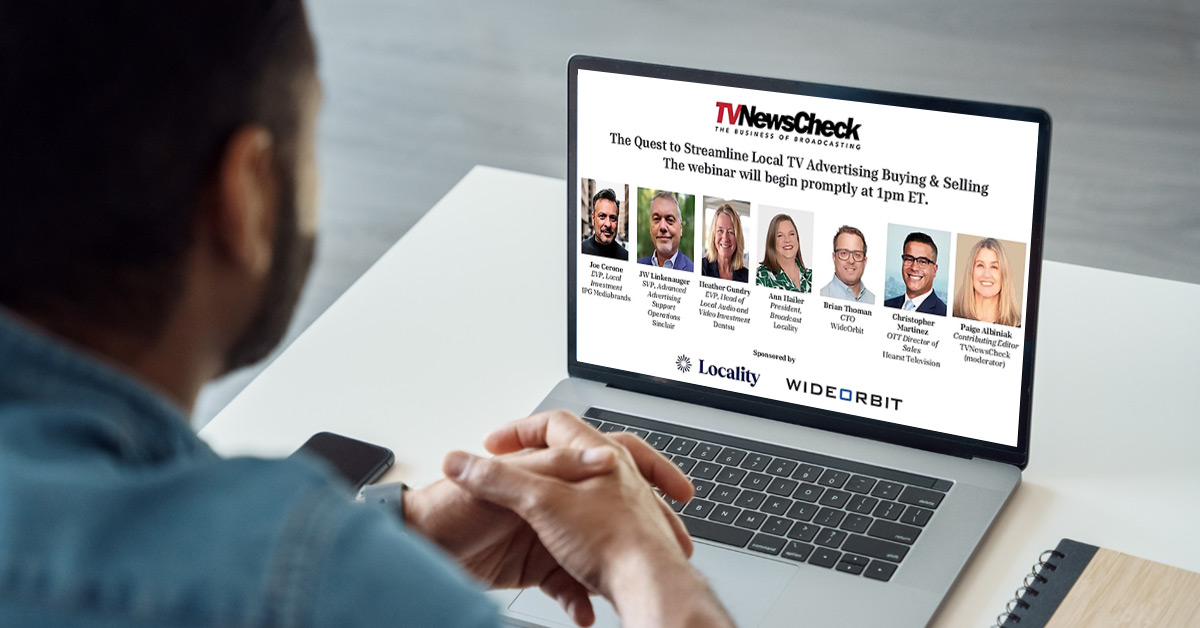
June 18, 2025
The Quest to Streamline Local TV Advertising: Automation, Programmatic, and the Path Forward
By Brian Thoman, WideOrbit Chief Technology Officer
Local TV advertising continues to play a vital role in reaching high-value audiences, but buying and selling remains complex. As digital platforms chip away at local linear TV’s share of ad budgets, the industry is in a race to modernize and simplify. The stakes are high, and the pressure is mounting.
That was the focus of the recent TVNewsCheck webinar, The Quest to Streamline Local TV Advertising Buying & Selling. I was grateful for the opportunity to participate as a panelist alongside leaders representing broadcast TV, advertising agencies, and ad tech. While we all had differing opinions on approach, we all agreed on one central truth: If local TV is to remain competitive, the entire transaction process – from planning to fulfillment – needs a fundamental transformation built on automation, interoperability, and smarter workflows.
Digital Is Winning on Ease, Not Necessarily on Value
Panelist Christopher Martinez of Hearst Television made a clear point: “The value of a local audience has never been higher.” And it’s true. Local advertising budgets are increasing but a growing portion of those budgets are going to digital platforms. Despite its effectiveness, local TV continues to lose ground.
There are many reasons for that lost ground, but a key factor is the complexity of the transaction process. Buying digital media is faster, easier, and less expensive than navigating the fragmented, manual-heavy process of buying local TV across multiple markets. “Localized messaging has better outcomes,” said Ann Hailer of Locality, but ease of execution often wins out over performance, and will continue to do so unless the local TV ecosystem catches up.
Programmatic Is Coming… but Not Without Laying the Groundwork
A central theme across the webinar was the future role of programmatic in local TV advertising sales. From Magnite and ITN’s announced programmatic platform collaboration to the TVB’s current RFP for a sell-side programmatic portal, big steps are being taken.
Still, it’s a big leap to go from the current manual process straight to programmatic. From my perspective here at WideOrbit, the tools to automate stewardship of a complex buy are just as important as automating the actual sale – and they need to come before we can get to programmatic. While system-to-system integrations are important, simply connecting systems without rethinking the entire process will fall short. At WideOrbit, we’re not just enabling automation – we’re architecting the underlying infrastructure to power an intelligent, responsive, and data-centric local TV ecosystem.
Heather Gundry of Dentsu echoed this, stating that automation must also include campaign optimization: “We have to [have the ability to] pull the levers after the sale, based on what’s working and what’s not.”
Fragmentation Requires Interoperability – Not Uniformity
Despite the industry’s complexity, there’s widespread agreement that a one-size-fits-all system isn’t the goal. Instead, the focus must be on interoperability, systems that “talk” to each other to reduce friction.
As Joe Cerone of IPG Mediabrands and Ann Hailer both pointed out, it doesn’t need to be one system for everyone, the systems just need to talk to each other. And that applies not just to sales systems but to the entire fulfillment pipeline, from materials to measurement.
JW Linkenauger of Sinclair emphasized the need to “get information to the buyer in a format they can ingest right away,” reinforcing the value of APIs and standards like TIP for improving speed and accuracy.
Automation Is the Backbone of the Future
The big takeaway? This isn’t just about making local TV easier to buy, it’s about reimagining the infrastructure so it can support new models like programmatic, real-time bidding, and addressable advertising.
Tools must be developed with automation at their core. As Sinclair moves into the ATSC 3.0 era, JW noted that the “automate-first” mindset that has always been at the core of digital is allowing them to offer more cross-platform sales. It’s a philosophy that must inform linear TV as it moves forward.
The transformation won’t happen overnight, and it won’t be without challenges. But it’s clear that automation, interoperability, and a willingness to rethink entrenched processes are the keys to modernizing the buying and selling of local TV advertising.
Want to dive deeper into the discussion?
Watch the full webinar recording to hear from industry leaders on where we are now, and where local TV advertising needs to go next.
